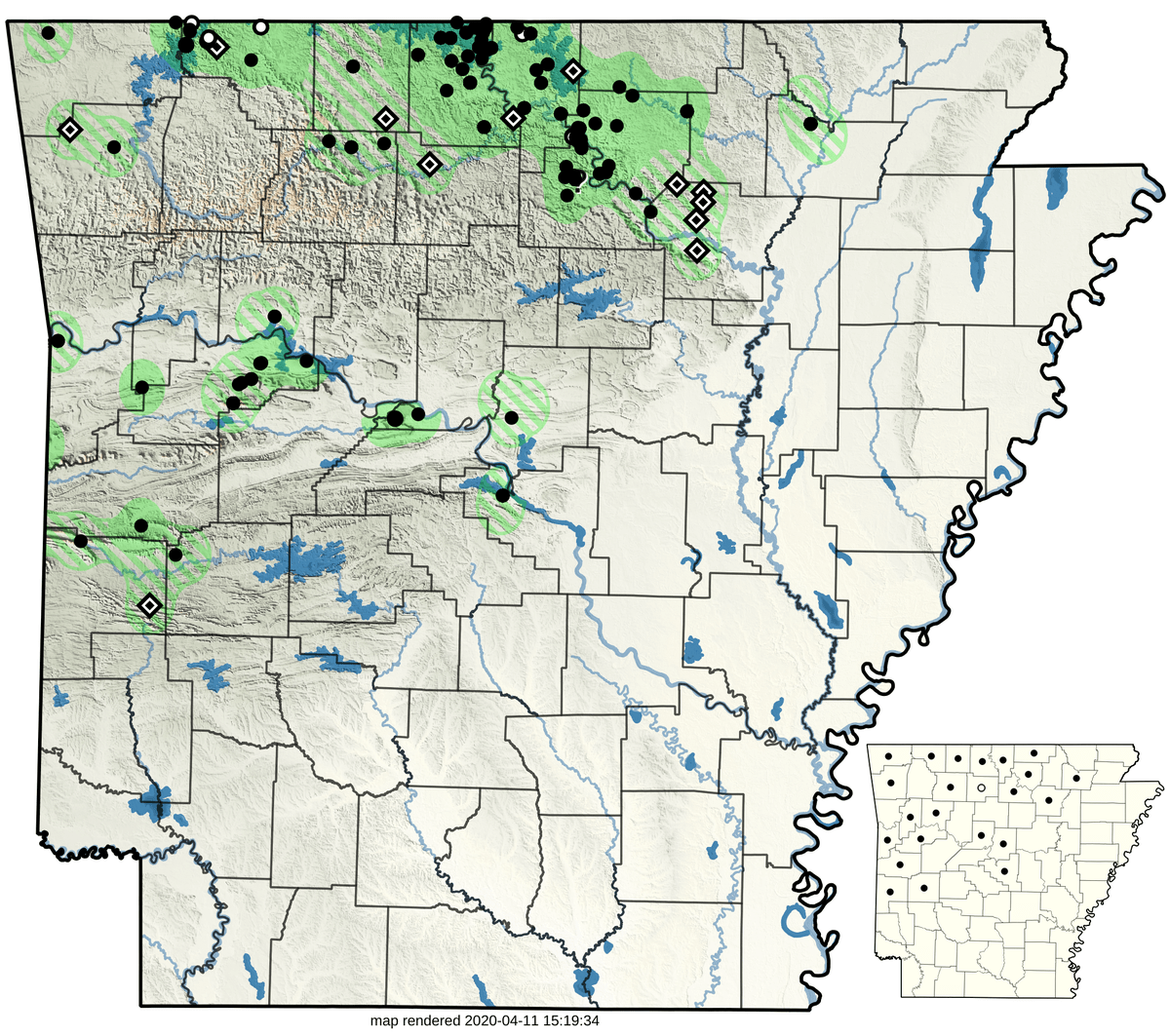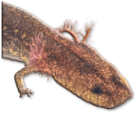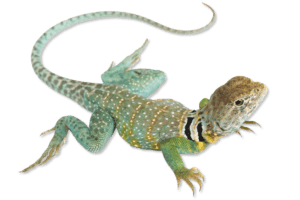Arkansas Herpetological Atlas 2019
This species is represented by 491 records from 26 sources: 461 museum ( ), 0 literature (
), 0 literature ( ), 0 research (
), 0 research ( ), and 18 observation (
), and 18 observation ( ), with 12 additional Trauth et al. (2004) locality points remaining unsourced (
), with 12 additional Trauth et al. (2004) locality points remaining unsourced ( ). It has been museum vouchered for 23 of 75 counties (
). It has been museum vouchered for 23 of 75 counties ( ), with 1 additional counties having other forms of reported occurrence (
), with 1 additional counties having other forms of reported occurrence ( ). Years of collection range from 1853 to present.
). Years of collection range from 1853 to present.
This species historically occupied open rocky glades and mountainous ridges throughout much the Interior Highlands. It appears to have been extripated from much of its former range, including northwest Arkansas (last confirmed 1940), the vicinity of the Buffalo River (last confirmed 1972), Mount Magazine (last confirmed 1965), Pinnacle Mountain (last confirmed 1945), north of Conway (last confirmed 1948), and western Ouachita Mountains (last confirmed with a single isolated observation record from 2002 near Y-city, Scott County). Records attributed to Fayetteville, Washington County; Fort Smith, Sebastian County; and Black Rock/Imboden, Lawrence County; are likely generalized localities or in reference to institution sources rather than collection sites. A cluster of localities from Independence County, plotted by Trauth et al. (2004), remain unsourced.











































































































